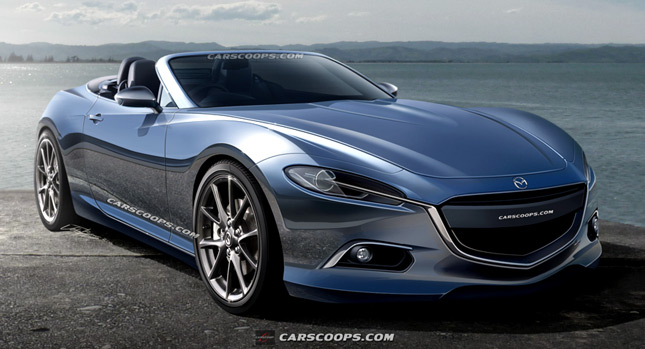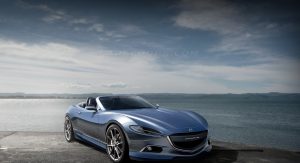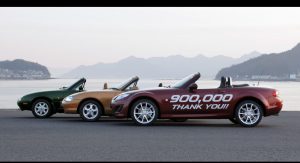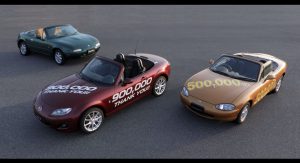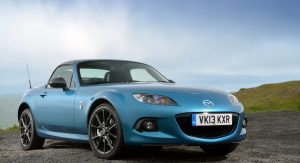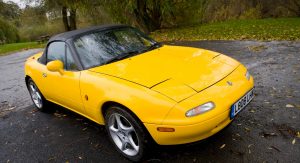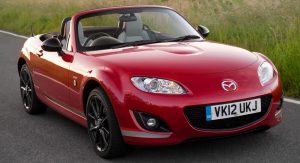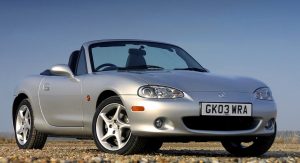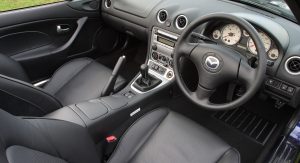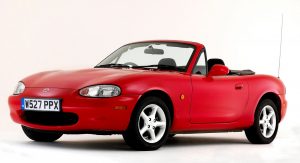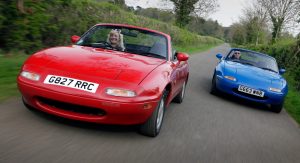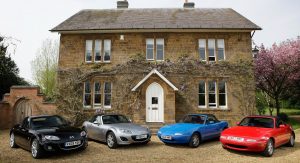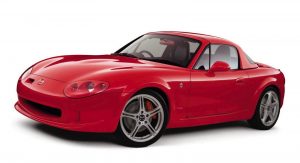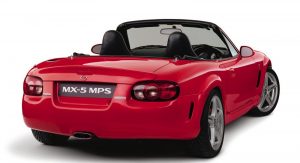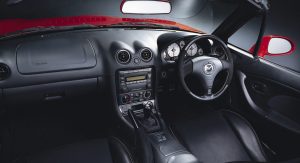Mazda’s long serving MX-5 Miata is what you would call a true, pure drivers car; an affordable rear-drive, front-engined roadster with a fun value dialed to max. It’s still one of the bestselling roadsters on the market today and retains a strong, loyal following.
Nevertheless, the Japanese carmaker and Alfa Romeo are co-developing a successor to the MX-5 that stays true to the original formula (the Italian manufacturer will get their own distinctive Spider version). So with that in mind, it was decided to digitally envisage how the next MX-5 could look.
Design:
First of all, I’ll make no secret that the design of the original MX-5 never quite appealed in my mind. Sure, it looked like a cute British roadster; yet it was too feminine, barbie-like to seriously consider for my driveway. Successive generations have improve the appeal somewhat, with more gender-neutral styling gracing the current two-seater.
This design study is heavily influenced by Mazda’s ‘Kodo’ design language, with the aim of making it more masculine whilst retaining those classic sports-car proportions.
So starting at the business end; the long, dynamic hood sweeps down into the bumper. Below this is Mazda’s new corporate grille flanked by headlights that pay homage to prior generation MX-5’s with their smooth, rounded edges. Further down, a heavily flanked lower bumper extension skirts around the sides, helping emphasize the car’s planted stance.
Sharp creases dominate the front fenders as they sweep backwards into the doors – mimicking the effect seen on the Mazda Takeri concept. While the first three generations of MX-5 have had rather upright windscreens, this proposal takes on more of an speedster approach with its heavily raked frontal glass.
One area where the MX-5 has disappointed in the past is in the hindquarters – drab is a word that comes to mind. Anything with a strong frontal presence should equally look great from the rear too; while not illustrated here, the taillights sit neatly into the crisp rear fenders, separated by an aggressive duck-tailed trunk lid.
Interior:
Mazda has been advancing well with its interiors in recent years. Compared with what they were pumping out in the late 1990’s, most of their lineup now boasts premium switchgear, materials and build quality.
However, there is always room for improvement – the MX5 needs to push the envelope further with striking design and sublime detailing. Think about what’s currently found in the Jaguar F-Type, Audi TT and BMW Z4 (but on a budget); such a cabin should make the driver feel special – not the opposite.
Don’t expect cabin real estate be vast; but rather incremental improvements to comfortably seat its occupants with improved hip and legroom. For those rain-doused fast get-aways, a quicker folding ragtop mechanism should help stop upper-body moisture and dampness issues.
What Could Power It:
Of course, a Rotary should – what else? However, back on earth, the next MX5 could use a new 1.5-liter and 2.0-liter fours in ‘Skyactiv-G 2’ configuration. Say what? This is an extended development of current Skyactiv premise that brings Homogeneous Charge Compression Ignition (HCCI) to the table. Along with improvements in cooling (which is a challenge with HCCI engines), this second-generation setup brings diesel-like efficiency to the petrol engine without having to utilize hybrid technology.
Platform & Handling:
This conceptual study rides on the same base that underpins the Alfa Romeo’s upcoming Spider, so you can bet on one hell of a driver’s package. Power will still be fed to the rear wheels via six speed manual or six speed automatic transmissions.
Usually car manufacturers like to get a good balance between ride and handling; for the MX-5, this means additional wheelbase length to help with stability whilst maintaining acceptable ride quality. The Skyactiv philosophy will also target weight reduction in the aim of improving nimbleness for an more engaging drive.
While its Alfa Romeo platform-sibling should provide equal amounts of driving fun, direct competition is expected to arrive in Toyota/Scion GT-86 format. However, until those gas torches finally tackle the GT-86’s roof, Mazda has a relatively clear playing field (unless MX-5 pricing skyrockets).
In summary: My design proposition may appear as a departure from MX5’s of yesteryear, yet I’d ague that change was needed to captivate a broader audience. What emerges once Mazda rips the covers off its next roadster could be an interesting surprise – that 2015 Chicago Auto Show can’t come soon enough.
Let us know your thoughts and suggestions in the discussion area below.
By Josh Byrnes
Photo Renderings Copyright: Carscoops / Josh Byrnes
PHOTO GALLERY



